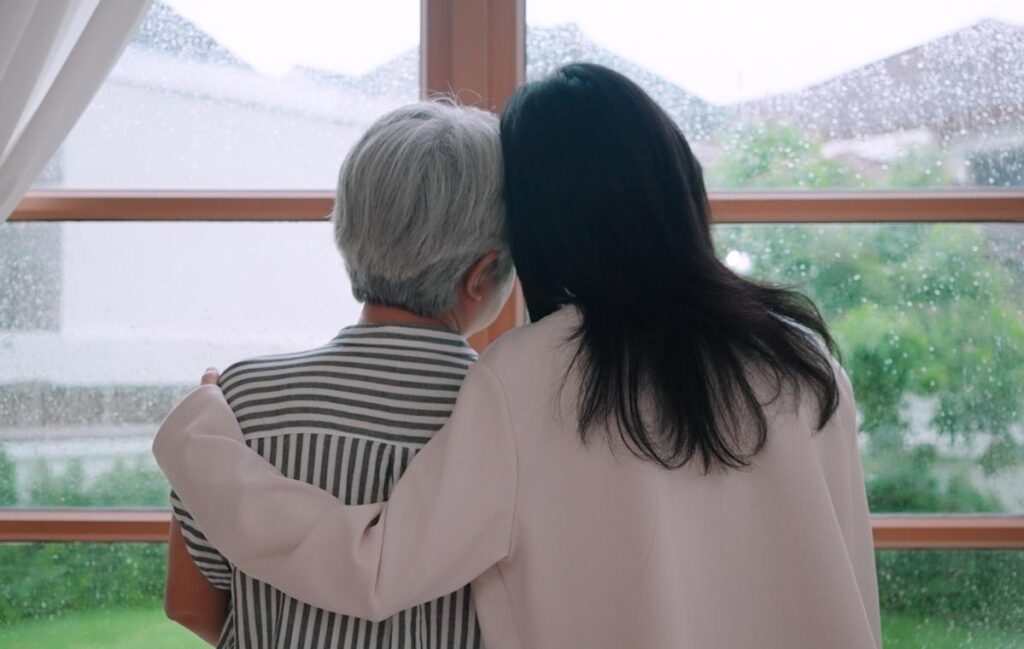We plan for vacations and plan for retirement, but end-of-life planning is something we tend to put off. Talking about downsizing or moving into a retirement community (or a long-term care facility) are among the most important conversations adult children will have with their parents, and experts say these conversations should happen as early and often as possible.
Broaching the subject of downsizing or moving can be delicate, and most elderly parents are resistant to move out of their houses. In fact, nearly every Canadian wants to age in their homes and communities.
A 2020 survey found that 96 per cent of Canadians aged 65 and older would do “everything they could” to avoid going into a long-term care facility, according to the National Institute on Ageing. That’s a relevant statistic to consider when approaching your aging parents with this sensitive conversation.
Meanwhile, Canada’s population continues to age. Around 19 per cent of Canadians were aged 65 and older on July 1, 2023. By the end of the decade, seniors could represent between 21 per cent to 23 per cent of the total population. As this demographic continues to grow, conversations around end-of-life planning will increasingly move to the forefront.
With this in mind, Yahoo Canada spoke to an expert about signs it might be time for your parents to consider downsizing.
Signs it might be time for your parent to downsize
It’s hard to know when it might be time to help your elderly parents downsize, but Stephanie Chan, a senior living advisor and founder of Home to Home, a care planning business based in Vancouver, B.C, has a few common clues to look out for.
One scenario for aging parents is their day-to-day routines seem normal, but gradually over time, you spot subtle warning signs. “They may seem minor and not as noticeable,” Chan says. “But I would encourage families to pay attention to a few things.”
1. Mobility
“Observe how your parents are getting around the house. If you’re picking up to go to an appointment, do you notice that it’s taking them longer to get ready? Are they manoeuvring stairs differently? Have they had any falls, even small falls, in recent weeks?” Chan says mobility is one common warning sign to consider whether the living environment is still suitable.
2. Ease of daily living
Changes in your loved one’s ability to bathe themselves or go to the washroom on their own are another indicator it might be time to discuss living arrangements.
“Are they remembering to take their meds?” Chan asks. “Are they cooking for themselves? Are they keeping the house tidy? Are they dressing themselves OK?”
3. Mental wellbeing
“Do they seem more isolated? Socialization can really impact one’s well being. If you notice your parents never going out and they’re isolated all the time, that could be a warning sign to think about moving,” Chan says. “Seniors residences have a lot of socialization, and I think it’s actually one of the most underrated benefits of seniors residences.”
4. Cognitive ability
Another sign is if your parent has become more forgetful to the point where they’re unable to take their meds or are at risk of going out and forgetting their way home. Diagnoses of dementia or Alzheimer’s are also indicators it may be time for new a new living arrangement to ensure their safety.
5. Triggering events
The loss of a spouse or loss of a driver’s license could also trigger a discussion of downsizing or moving to a group environment. Similarly, a chronic health diagnosis that could impact their daily routine may also be a catalyst for discussing living arrangements.
How to deal with resistance
In her 18 years dealing with seniors, Chan says resistance to talk of in-home care or moving is one of the biggest conversations she helps families navigate. If your parents need help at home, her advice is to start small, whether it’s hiring a cleaner, gardener, or cook to help with daily tasks. “That might be a good way to just get your feet wet with trying out home care,” she says.
And, if the family agrees it might be time to move, Chan suggests people tour residences. Book it during lunchtime if possible. “Many places will invite you to stay, and you can test out the food and see other residents coming down for their meals,” Chan says. “It will demystify any preconceived notions of what seniors’ residences are like. A lot of people think it’s doom and gloom, but there’s a lot of seniors’ residences that are very, very nice.”
Let us know what you think by commenting below and tweeting @YahooStyleCA! Follow us on Twitter and Instagram.
Read the full article here


